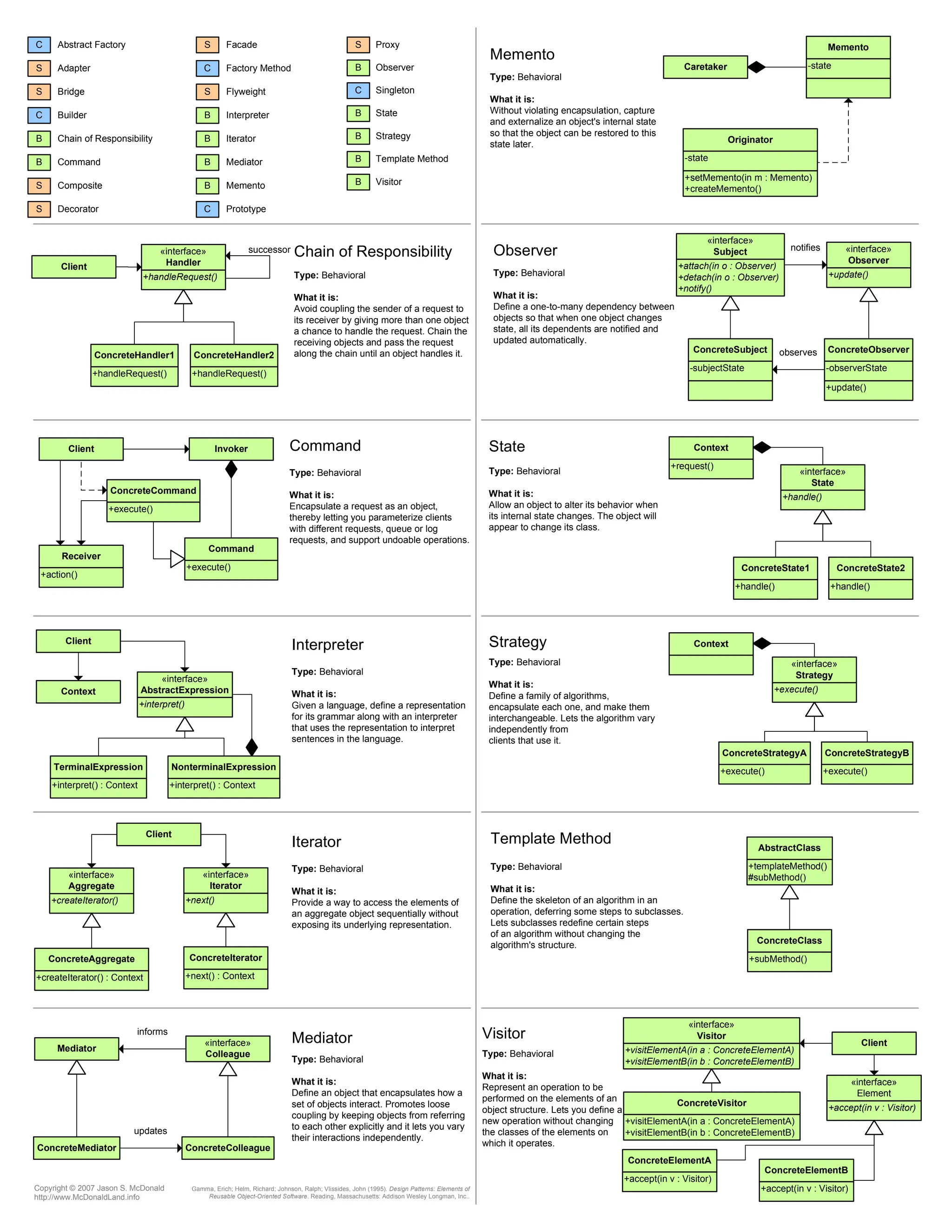The document provides an overview of various behavioral, structural, and creational design patterns in object-oriented software development. It summarizes the functionality and purpose of multiple design patterns such as Visitor, Strategy, Observer, Memento, Factory Method, Singleton, and more. Each pattern is described with its key components and the problems it aims to solve in software architecture.

